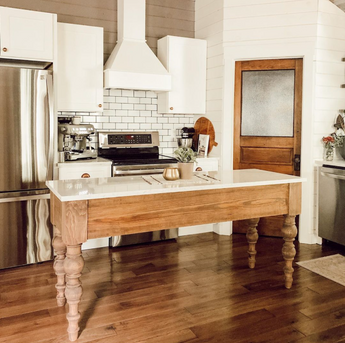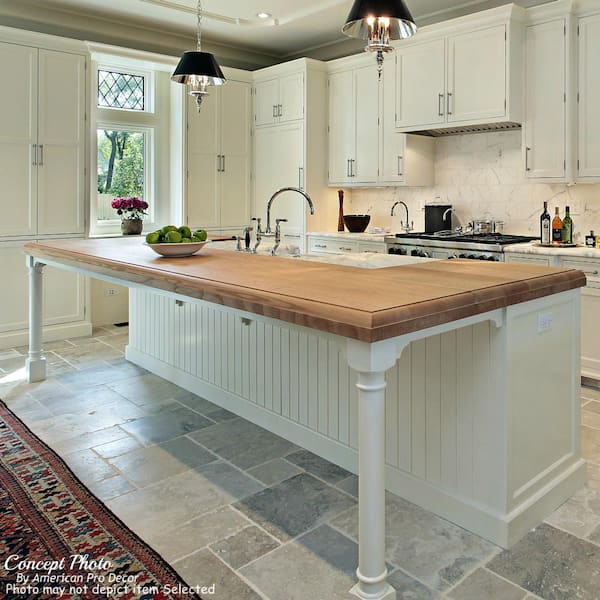A Comprehensive Overview to Selecting the Right Kitchen Island Leg
A Comprehensive Overview to Selecting the Right Kitchen Island Leg
Blog Article
Checking Out the Crucial Features of a Kitchen Area Island Leg for Your Culinary Space
The kitchen island serves as a central center in any type of cooking area, and the option of leg layout is critical in enhancing both its capability and visual appeal. Understanding the crucial features of cooking area island legs-- consisting of material choices, style styles, and security aspects-- can significantly influence the overall experience within the kitchen. As we discover these components, we will discover exactly how thoughtful customization and accessories can elevate your cooking area island from a plain utility to a striking focal point. What details considerations should be prioritized to achieve this balance?
Significance of Cooking Area Island Legs
Kitchen island legs play an essential function in both the performance and aesthetics of a cooking area room. They not only support the weight of the island but likewise improve the total design, adding to the cooking area's aesthetic allure. The choice of legs can determine the design of the cooking area, be it contemporary, conventional, or rustic.
Functionally, durable and correctly designed legs guarantee stability, enabling for the secure use the island for various jobs such as cooking, dining, or entertaining. Strong legs stop tottering and shifting, supplying a dependable surface for daily activities.
In addition, the height and placement of the legs can influence the convenience level for those seated at the island. A well-considered elevation can accommodate bar feceses or chairs, promoting a welcoming setting for gatherings.
In enhancement to these practical considerations, kitchen area island legs can serve as a focal factor in the area (kitchen island leg). Decorative or distinctively developed legs can raise the layout aesthetic, making the island a focal point. Hence, choosing the best kitchen island legs is crucial for stabilizing form and function in any kind of culinary space
Product Options for Legs
Picking the appropriate material for kitchen island legs considerably affects both durability and style. Typical material options include timber, stone, and metal, each offering distinct benefits.
Timber is a prominent option because of its warmth and convenience. It can be easily personalized to match various decor styles, from rustic to modern. Woods like oak and maple offer excellent strength and long life, while softer woods can be a lot more prone to wear and tear.
Steel legs are favored for their sleek, modern-day aesthetic. kitchen island leg. Stainless steel and aluminum are not just durable but likewise resistant to rust and deterioration, making them ideal for cooking area settings. They can develop an industrial appearance and are typically readily available in different finishes to enhance various other kitchen area aspects
Stone legs, such as granite or marble, add an element of deluxe and security. While much heavier than other products, they provide phenomenal durability and can stand up to significant weight. However, they might call for added assistance to make sure appropriate equilibrium.
Ultimately, the choice of material need to straighten with both practical demands and the general style vision of the kitchen area area, making certain that the island legs improve both utility and looks.
Layout Designs to Think About
What layout styles should be thought about when choosing legs for a kitchen area island? The choice of leg design significantly influences the total aesthetic of your culinary area. For a modern kitchen, streamlined and minimalistic leg designs, such as stainless steel or geometric shapes, can enhance the contemporary allure, supplying a clean and minimalist look.
On the other hand, traditional cooking areas profit from timeless styles such as transformed or carved wooden legs, which add warmth and character. These options usually include detailed information that enhance vintage furnishings. For a rustic setting, take into consideration legs made from reclaimed wood or wrought iron, which bring an organic, earthy high quality to the room.
If you lean towards a commercial style, robust metal legs with a distressed coating might be optimal, offering an edgy yet get redirected here sophisticated touch. Furthermore, farmhouse style kitchens can incorporate chunky legs that stimulate a sense of durability and homeliness.

Elevation and Stability Aspects
The elevation and security of a cooking area island are important elements that directly affect its capability and user experience. An excellent kitchen island leg need to give adequate height to accommodate a range of jobs, from food prep work to informal dining. Normally, cooking area islands stand between 36 to 42 inches high, aligning with next basic counter and bar elevations. This range ensures convenience for users while executing various activities, hence boosting the general functionality of the space.
Security is just as vital, especially as kitchen area islands often serve as focal points in cooking atmospheres. The leg's accessory to the island's base should be secure, making certain durability and strength versus the wear and tear of daily usage.
Customization and Devices
Customization choices and accessories for kitchen island legs can considerably enhance both the aesthetic charm and capability of the room. House owners can choose from a variety of materials, including rock, steel, and wood, permitting smooth assimilation with existing kitchen area decor. The selection of surface-- be it a natural tarnish, paint, or powder finishing-- additional personalizes the appearance, making certain that the island enhances the total design motif.
Along with product and finish, property owners might additionally explore the consolidation of devices such as attractive brackets, flexible feet, or incorporated shelving. Brackets can supply extra assistance while adding to a rustic or modern-day visual. Flexible feet are particularly useful for uneven flooring, guaranteeing the island continues to be secure and level, which is critical for both safety and security and functionality.

Conclusion
In final thought, kitchen area island legs serve a crucial duty in offering stability and boosting the general aesthetic of the cooking area. Customization alternatives and accessories can boost the kitchen island, making it an unique focal factor within the home.
The cooking area island serves as a central center in any kind of culinary area, and the choice of leg design is essential in enhancing both its functionality and aesthetic allure. Recognizing the crucial functions of kitchen area island legs-- consisting of material alternatives, layout styles, and stability elements-- can substantially impact the overall experience within the cooking area.Cooking area island legs play an essential role in both the performance and aesthetic appeals of a kitchen room.What style styles should be thought about when choosing legs for a cooking area island?In final thought, cooking area island legs offer a vital function in offering stability and enhancing the general visual of the culinary space.
Report this page